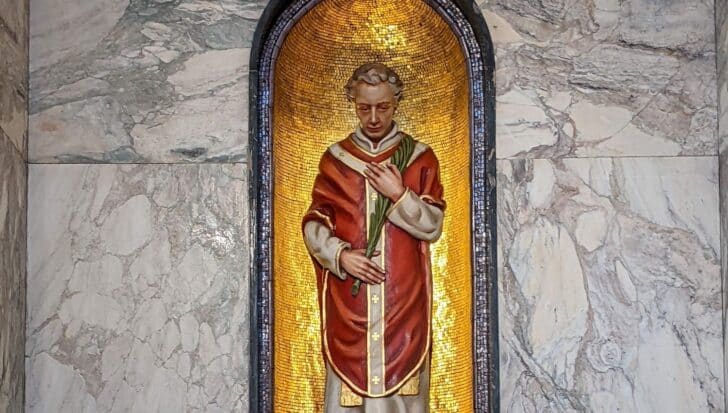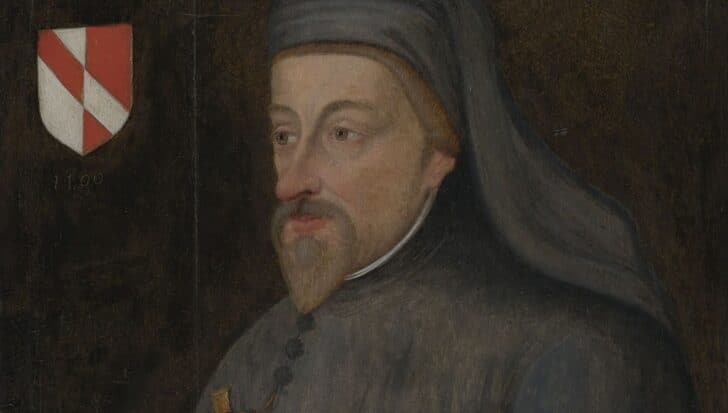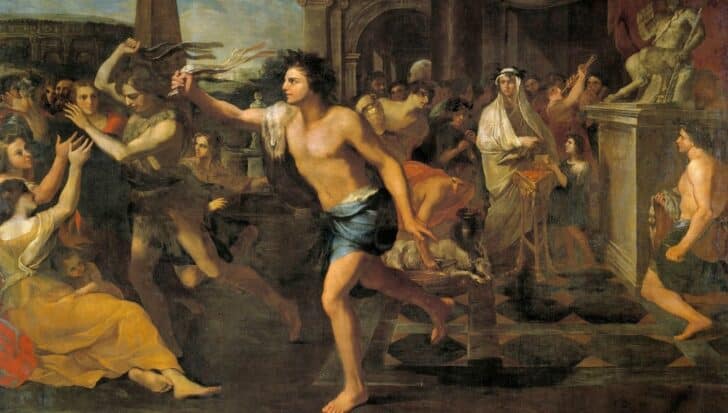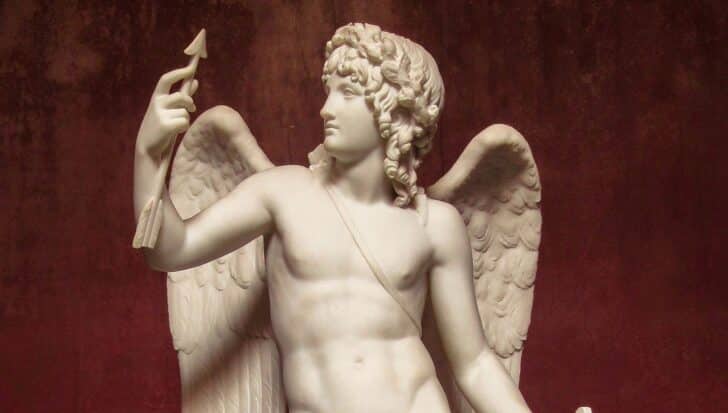Every year, on Valentine’s Day, we celebrate love by giving chocolates and red roses and sending cards to our significant others.
The traditions we participate in have evolved over the centuries, but the date has always stayed the same.
This holiday of love has much older roots than you might think, and is shrouded in mystery!
We all know Valentine’s Day is a day of love and companionship, though, but why do we celebrate love in February?
Who was Saint Valentine?

There are quite a few stories of martyrs and saints named Valentine, mostly between 269-273 AD in Rome.
They all pretty much go the same way, though, and so it’s difficult for historians to tell whether he is one man or many.
Two stories are the most compelling and are almost identical. One is of a Roman priest, and the other is of the Bishop of Terni.
They were both imprisoned at a nobleman’s house for performing secret weddings and later executed on February 14th.
The main difference between the two comes down to miracles, as the Bishop of Terni didn’t perform any.
The Roman priest befriended the nobleman’s blind daughter while imprisoned, though, and healed her of her blindness. Before his execution, he left a note for her signed “Your Valentine.”
Because of the mythical nature of the stories, it is difficult to know if these are of the same person or if these people existed at all.
Like much of Christian literature, it was written down long after it was said to have happened.
Why do we celebrate Valentine’s Day at all, and why on the fourteenth?

Long before Valentine’s Day became a romantic celebration, it was a Christian feast day.
This solemn feast celebrated the Martyrs who died on February 14th, with Pope Gelasius I holding the first of these Valentine’s Day feasts in 496 AD.
Almost a thousand years later, in 1382, a poet named Geoffrey Chaucer wrote a poem called “Parliament of Fowls.” This poem is the first recorded history of Valentine’s Day being romantic.
In his poem, Chaucer wrote, “For this was on Saint Valentine’s Day, When every bird comes there to choose his match,” talking about the springtime when birds in England start to mate.
Soon after, Charles VI of France at Mantes-la-Jolie in 1400 wrote the Charter of the Court of Love.
The charter declared that an annual feast would be held, poetry and music would be sung, and women would rule on lovers’ disputes in the royal court.
Since then, writers like Shakespeare have written about Valentine’s Day in connection with love and romance, and people have celebrated February 14 as a day of love.
Their writing connects mostly to mating seasons in spring, a particularly romantic time for animals of all kinds.
Was Valentine’s Day a repurposed pagan celebration?

Long before the feast of Saint Valentine started in Rome, Romans celebrated a different holiday called Lupercalia between February 13 and 15.
Some historians say that Pope Gelasius I created the Saint Valentine’s feast to replace this day, although not all agree.
Lupercalia was a fertility celebration in honor of Pan and Juno, pagan gods of love, marriage, and fertility. The festival started with a goat sacrifice by priests called luperci.
The goat skin was then cut into strips and used by the luperci to hit women, supposedly helping them become more fertile. It wasn’t violent at all, though, and women seemed to welcome the whips.
Although Pope Gelasius I outlawed the festival and started the Saint Valentine’s feast around the same time, no other evidence exists that Valentine’s Day replaced it.
So, Valentine’s Day may also simply be celebrated on February 14 as a way to stop pagans from celebrating their gods!
What do Cupid and red roses have to do with Valentine’s Day?

There are two stories in Greek mythology about the origins of the red rose. One says that the red rose was created when the goddess Aphrodite scratched herself on a white rose, turning it red.
In the more romantic story, Adonis, Aphrodite’s lover, gets struck by a boar while hunting.
While he was wounded and bleeding, Aphrodite started to cry, and out of the mixture of her tears and his blood grew red roses.
Although Cupid is a Roman deity, he was originally a Greek deity called Eros. In early Greek mythology, Eros is depicted in his late teens and is very handsome and virile.
He is also said to be more powerful than any of the gods, as he could make anyone fall in love.
Eventually, Eros was seen as too powerful, and stories about Eros became more about him following his mother’s wishes.
By the time the Romans coopted Eros and turned him into Cupid, he was already a harmless little boy.
During the Renaissance, painters like Caravaggio became obsessed with these symbols of love. Later, greeting card companies like Hallmark followed suit, and the symbolism remains to this day.
Whether you are hopelessly in love with your high school crush or you have been married to the love of your life for years, Valentine’s Day is an important day.
The more religious of us will celebrate the sacrifice of a saint who wanted to wed couples, even though it put him at great risk.
St. Valentine, unfortunately, executed on the 14th, and that’s the real reason we celebrate Valentine’s Day on this day!
Regardless of how you spend the day, the one thing you can be sure of is that come February 14, the birds in the northern hemisphere will start to sing to each other, and poets will think that’s very romantic!

















